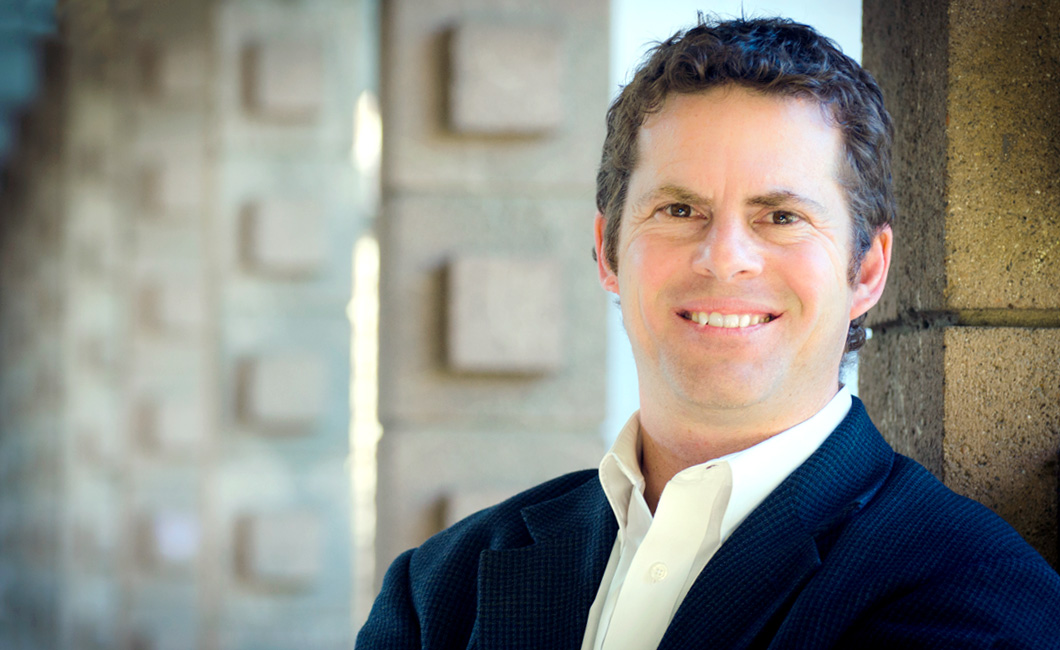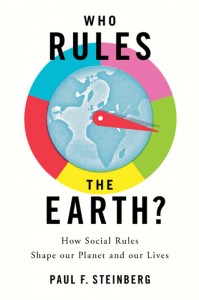Faculty
Rewriting the Rules
Paul Steinberg surrounded himself with books on popular science while he was writing the book Who Rules The Earth? How Social Rules Shape Our Planet and Our Lives. The book, his third, is his most unconventional. “It’s much more public-oriented than most academic books aspire to, and more research-based than most commercial nonfiction projects,” he says, so he was searching for the right way to speak to a broader audience about an issue that’s been his focus for the last six years: how environmental destruction is deeply engrained in the fabric of society.

“It’s more a grand tour than a focused spotlight. I’m trying to take a vast literature and make it accessible and fun to read, and so I had to be present in some of the stories the book tells.”
For example, Steinberg, the Malcolm Lewis Professor of Sustainability and Society and professor of political science and environmental policy, recounts an experience that he had when he was a young Peace Corps volunteer in Liberia in 1989, when Charles Taylor was beginning his campaign to foment civil war. A taxi that Steinberg and his wife were riding in was commandeered by rebel soldiers, and though the soldiers eventually exited the taxi without explanation, and Steinberg and his wife were evacuated from Liberia along with other Peace Corps volunteers, Steinberg was left convinced of the fragility of national governance in West Africa and many other parts of the world and the dire implications that had for managing the earth’s resources sustainably. “It made me realize we need institutions capable of governing over long time horizons,” he says.
Who Rules The Earth?, published in March 2015 by Oxford University Press, focuses on how those institutions, or social rules—which include laws, policies, city codes, cultural norms, contracts, design standards and constitutions—shape everything around us, from the type of light bulb that illuminates the room to the toxicity of our water to our access to food. “Civilizations all work through rules. The central argument of the book is that if we want to achieve sustainability, we need to change the rules. Plant a tree: awesome. Take public transit: fantastic. But we need to get involved in political and institutional change,” Steinberg says.
“Institutions are ideas with anchors attached to them. We don’t want clean water for a week. It’s about putting in place new patterns of social interaction.”
He notes that the biggest challenge he’s faced with bringing the book into the world has been scaling the walls of the ivory tower to find ways to share it with a broad reading audience. “I’d like to engage people who care about the environment, about sustainability, but aren’t quite sure what it’ll take to achieve it.”
Plant a tree: awesome. Take public transit: fantastic. But we need to get involved in political and institutional change.
– Paul Steinberg
To that end, Steinberg worked closely with his Harvey Mudd students, and students from five other universities, on the development of a unique companion project to Who Rules The Earth?: a set of multimedia educational tools on sustainability— including an animated film, a video game, a social media website, interactive “institutional landscapes” and a Facebook discussion group—called The Social Rules Project, that, ideally, will give the book legs. A significant part of its audience will look a lot like his students: young people who care about sustainability, who recycle, who go to organic farmers’ markets, but who are still curious as to what it would take to enact lasting change.
“There’s a strange moment when you recycle a can, and you walk those, say, 20 extra steps to the recycling container, and there’s a nagging sense of—does this matter at all? People intuit that small personal actions are not going to be enough. I hope that both projects will inspire people to complement their small everyday activities with engagement in social and political change,” Steinberg says. “Small actions are great—I’m not saying they’re unimportant, but meanwhile ocean levels are rising due to climate change.”

Steinberg credits Harvey Mudd’s Department of Humanities, Social Sciences, and the Arts for creating an atmosphere conducive to writing Who Rules The Earth? “My department allows its members so much creative latitude in the kinds of questions we ask that it facilitates risk taking and a long simmering of difficult ideas. I was allowed to take my time with it. The department has been incredibly supportive from the very beginning.”
His students served as guinea pigs for many of the chapters of Who Rules The Earth? as they were in development. “They’ve had a chance to help me vet many of these ideas from the start.”
He’s already at work on his next project, a book that focuses on issues of how to bring about change in local government, but he wants to stop and bask for a moment in the publication of Who Rules The Earth?
“I’ve spent my whole professional life studying social change, why some societies move toward sustainability while others are in a headlong rush in the other direction, and this book is the culmination of that investigation,” he says.